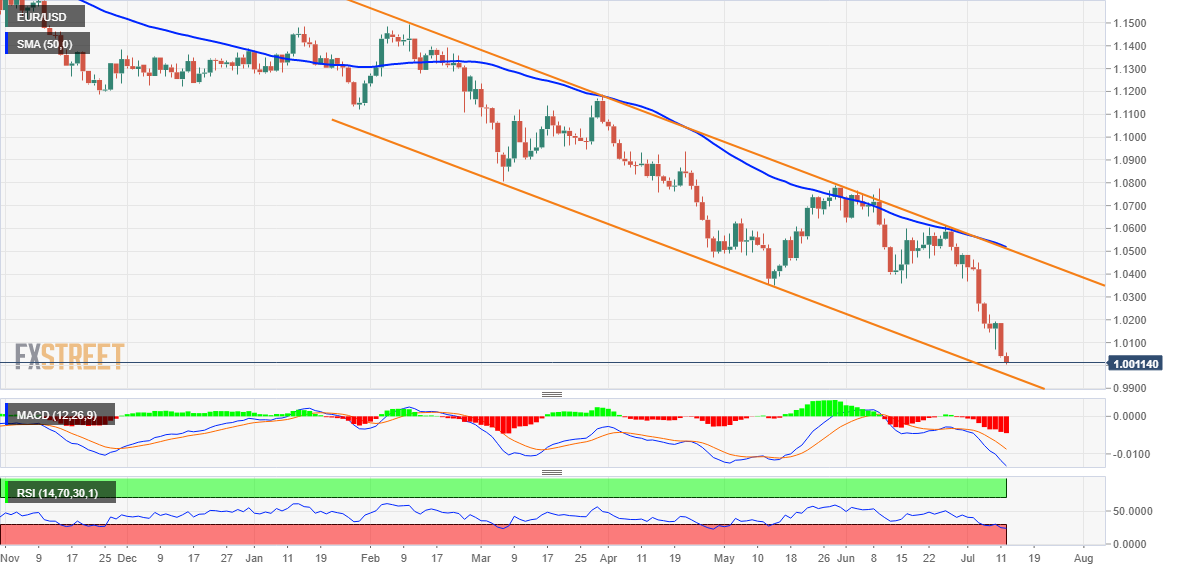- EUR/USD dropped closer to the parity mark for the first time since December 2002.
- The energy crisis in Europe continued fueling recession fears and weighed on the euro.
- The relentless USD rally to a two-decade high exerted additional pressure on the pair.
The EUR/USD pair struggled to capitalize on Friday's modest bounce and came under aggressive selling pressure on the first day of a new week. Investors remain concerned that the energy crisis in Europe could drag the region's economy faster and deeper into recession. The Eurozone is also facing the risk of broadening fragmentation amid the recent sharp rise in borrowing costs of more indebted countries because of the European Central Bank's tightening plan. This was seen as a key factor that weighed heavily on the shared currency. This, along with the emergence of aggressive US dollar buying dragged the major to its lowest level since December 2002, closer to the parity mark.
In fact, the USD Index soared to a fresh two-decade high during the Asian session on Tuesday and continued drawing support from hawkish Fed expectations. The market seems convinced that the US central bank would stick to its faster policy tightening path to combat stubbornly high inflation. The bets were reaffirmed by the FOMC meeting minutes released last week, which indicated that another 50 or 75 bps rate hike is likely at the July meeting. Policymakers emphasized the need to fight inflation even if it results in an economic slowdown. Apart from this, the prevalent risk-off environment boosted the safe-haven buck and exerted additional downward pressure on the EUR/USD pair.
The market sentiment remains fragile amid worries that a more aggressive move by major central banks to curb soaring inflation would pose challenges to global economic growth. Furthermore, the ongoing Russia-Ukraine war and a fresh COVID-19 outbreak in China have been fueling recession fears. This, in turn, forced investors to take refuge in traditional safe-haven assets and further benefitted the buck. Tuesday's economic docket features the release of the German ZEW Economic Sentiment Index, which might do little to provide any impetus to the EUR/USD pair. Nevertheless, the fundamental backdrop supports prospects for an extension of the well-established bearish trajectory.
Technical outlook
From a technical perspective, the RSI (14) on the daily chart is already flashing extremely oversold conditions. This makes it prudent to wait for some near-term consolidation or modest rebound before positioning for any further losses. Hence, any further decline below the 1.0000 psychological mark is more likely to find decent support near the lower end of a multi-month-old descending channel, currently around the 0.9980 region. Some follow-through selling would be seen as a fresh trigger for bearish traders and make the EUR/USD pair vulnerable.
On the flip side, any attempted recovery could be seen as a selling opportunity near the 1.0070 region. This, in turn, should cap the EUR/USD pair near the 1.0100 round-figure mark. The latter should act as a pivotal point, which if cleared decisively could trigger a near-term short-covering bounce. Spot prices could then climb back to the next relevant hurdle near the 1.0180-1.0185 zone.






